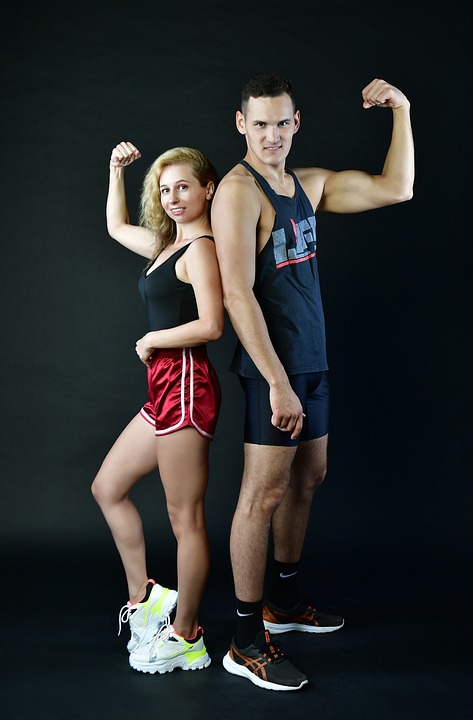When it comes to running, having the right form is crucial for optimizing your performance and reducing your risk of injury. Unfortunately, many runners neglect to focus on their form, instead relying on brute strength and endurance to get them through their runs. However, by incorporating a few simple tips into your running routine, you can boost your speed and efficiency, making your runs more enjoyable and productive.
Tip #1: Posture is Key
Good posture is essential for efficient running. When you slouch or lean forward, you create unnecessary tension in your muscles, which can slow you down and increase your risk of injury. To maintain good posture, focus on keeping your head up, shoulders relaxed, and core engaged. Imagine a string pulling your head up towards the ceiling, and a belt cinching your core muscles together.
Tip #2: Foot Strike Matters
The way you strike the ground with your feet can have a significant impact on your running form. Aim to land midfoot or forefoot, rather than heel striking. This will help reduce the impact on your joints and allow you to generate more power and speed. To achieve a midfoot or forefoot strike, try to land lightly on the balls of your feet, rather than slapping down with your heels.
Tip #3: Land with a Soft Landing
In addition to striking the ground with your midfoot or forefoot, aim to land with a soft, gentle touch. This will help reduce the shock and impact on your joints, making your runs feel smoother and more efficient. To achieve a soft landing, try to roll your feet forward, rather than slapping down with your heels.
Tip #4: Keep Your Knees Relaxed
Many runners make the mistake of stiffening their knees and ankles, which can slow them down and increase their risk of injury. Instead, aim to keep your knees relaxed and slightly bent, allowing your legs to swing freely and efficiently. This will help you maintain a smooth, fluid stride and reduce the impact on your joints.
Tip #5: Drive Your Arms Forward
Your arms play a crucial role in your running form, helping to generate power and balance. To optimize your arm swing, focus on driving your arms forward, rather than crossing them over your body. This will help you maintain a smooth, fluid stride and generate more power and speed.
Tip #6: Keep Your Hands Relaxed
In addition to driving your arms forward, aim to keep your hands relaxed and slightly cupped. This will help you maintain a smooth, fluid arm swing and reduce the risk of fatigue and injury. Try to avoid tensing your hands or fingers, and instead focus on keeping them relaxed and soft.
Tip #7: Breathe Naturally
Good breathing technique is essential for efficient running. When you breathe naturally, you can focus on your form and pace, rather than struggling to catch your breath. To breathe naturally, focus on taking slow, deep breaths through your nose, and exhaling slowly through your mouth.
Tip #8: Engage Your Core
Your core muscles play a crucial role in your running form, helping to stabilize and support your body. To engage your core, focus on drawing your belly button towards your spine, and keeping your abs tight and engaged. This will help you maintain good posture, reduce your risk of injury, and generate more power and speed.
Tip #9: Practice Proper Stride Length
Your stride length can have a significant impact on your running form and efficiency. Aim to take long, smooth strides, rather than short, choppy ones. This will help you maintain a smooth, fluid stride and reduce the impact on your joints.
Tip #10: Practice Regularly
Finally, practice makes perfect. To optimize your running form and boost your speed, make sure to practice regularly. Start with short, easy runs and gradually increase your distance and intensity as you build endurance and confidence.
Conclusion
By incorporating these simple tips into your running routine, you can optimize your form and boost your speed, making your runs more enjoyable and productive. Remember to focus on good posture, proper foot strike, soft landing, relaxed knees, driving arms, relaxed hands, natural breathing, engaged core, proper stride length, and regular practice. With a little bit of practice and patience, you can become a faster, more efficient runner.
FAQs
Q: What is the most important aspect of running form?
A: Good posture is the most important aspect of running form. By maintaining good posture, you can reduce your risk of injury and optimize your performance.
Q: How can I improve my foot strike?
A: To improve your foot strike, try to land midfoot or forefoot, rather than heel striking. You can also try to roll your feet forward, rather than slapping down with your heels.
Q: Why is it important to engage my core?
A: Engaging your core is important for maintaining good posture, reducing your risk of injury, and generating more power and speed.
Q: How can I reduce the impact on my joints?
A: To reduce the impact on your joints, try to land softly, maintain good posture, and engage your core. You can also try to wear proper running shoes and listen to your body to avoid overtraining.
Q: How often should I practice to optimize my running form?
A: To optimize your running form, practice regularly, ideally 2-3 times per week. Start with short, easy runs and gradually increase your distance and intensity as you build endurance and confidence.
10-simple-tips-to-optimize-your-running-form-and-boost-your-speed


